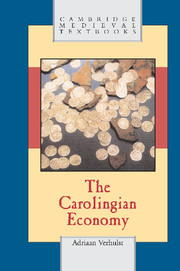1 - Landscape and settlement
Published online by Cambridge University Press: 05 June 2012
Summary
WOODLAND
The Carolingian landscape was for a large part, on the average for more than 40 per cent and in some regions up to 80 per cent, a natural landscape, consisting mainly of woods. The map of European forests in the early Middle Ages, made up by Charles Higounet, is still the best guide to study their geographical distribution. He has localised and identified nearly 150 individual forests, some of which can be studied more in detail. Most of them lay east of the Rhine and along it, and also in the adjoining eastern parts of France and Belgium, a situation that lasted to the end of the Middle Ages and persists still today. In around 1500, one-third of Germany and a quarter of France were still covered by woodland. The larger part of these forests was royal land, protected by the king as hunting reserves, which is the original meaning of ‘forest’ (Lat. forestis, forestum). Some of these forests consisted not only of woods but included also uncultivated land, pasture, heath, moor and even arable land. In central Europe the Thuringian forest, in the middle of which the abbey of Fulda was founded in 742, may have been inhabited around that centre before the arrival of the monks. Clearances, named capturae, took place all around from the beginning of the eighth century and continued well into the ninth, perhaps related to the military operations of Charlemagne against the neighbouring Saxons.
- Type
- Chapter
- Information
- The Carolingian Economy , pp. 11 - 22Publisher: Cambridge University PressPrint publication year: 2002

